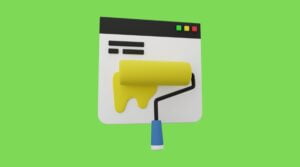If you’ve encountered a 403 Forbidden error on your WordPress site, it can be frustrating. This error means that the server is refusing to fulfill the request due to permission issues or other reasons. Fortunately, fixing it is often straightforward. Here’s a step-by-step guide to help you resolve the 403 Forbidden error in WordPress.
Table of Contents
- 1 Steps to Fix 403 Forbidden Error in WordPress
- 1.1 1. Understand the 403 Forbidden Error
- 1.2 2. Check File and Directory Permissions
- 1.3 3. Deactivate Plugins
- 1.4 4. Switch to a Default Theme
- 1.5 5. Check .htaccess File
- 1.6 6. Review Security Plugins and Firewall Rules
- 1.7 7. Check ModSecurity Rules
- 1.8 8. Verify User Roles and Capabilities
- 1.9 9. Clear Browser and Site Cache
- 1.10 10. Contact Your Hosting Provider
- 2 Conclusion
Steps to Fix 403 Forbidden Error in WordPress
1. Understand the 403 Forbidden Error
A 403 Forbidden error means that you are trying to access a resource or page that you don’t have permission to view. This can happen for various reasons, such as incorrect file permissions, issues with plugins or themes, or security settings.
2. Check File and Directory Permissions
Incorrect file or directory permissions can cause a 403 error. Here’s how to check and fix them:
- Via FTP/SFTP:
- Connect to Your Site: Use an FTP/SFTP client (like FileZilla) to connect to your WordPress site.
- Navigate to Your WordPress Directory: Locate your WordPress root directory (usually named
public_htmlorwww). - Check Permissions: Right-click on the folder or file and select “File Permissions” or “Permissions.”
- Set Correct Permissions: Ensure that directories are set to
755and files to644.
- Via cPanel:
- Log in to cPanel: Access your cPanel account.
- Open File Manager: Go to “File Manager.”
- Navigate to WordPress Directory: Find your WordPress installation directory.
- Check Permissions: Right-click on the file or directory and select “Permissions.”
- Set Permissions: Adjust permissions to
755for directories and644for files.
3. Deactivate Plugins
A problematic plugin can cause a 403 error. To check if a plugin is the issue:
- Access Your Site’s Files: Use FTP/SFTP or cPanel to access your site’s files.
- Rename the Plugins Folder: Navigate to
wp-contentand rename thepluginsfolder to something likeplugins_old. - Check Your Site: Try accessing your site. If the error is gone, rename the folder back to
plugins. - Reactivate Plugins: Reactivate plugins one by one through the WordPress admin dashboard to identify the faulty one.
4. Switch to a Default Theme
A theme issue might be causing the error. To rule this out:
- Access Your Site via FTP/SFTP or cPanel: Navigate to
wp-content/themes. - Rename Your Active Theme’s Folder: Rename your active theme’s folder to something like
theme_old. - Check Your Site: WordPress will default to a standard theme like Twenty Twenty-One. Check if the error persists.
5. Check .htaccess File
A corrupt .htaccess file can lead to a 403 error. To fix it:
- Connect to Your Site: Use FTP/SFTP or cPanel.
- Locate .htaccess File: Find the
.htaccessfile in your WordPress root directory. - Download a Backup: Download a backup of this file to your computer.
- Delete .htaccess File: Delete the
.htaccessfile from the server. - Generate a New .htaccess File: Go to your WordPress admin dashboard, navigate to “Settings” > “Permalinks,” and click “Save Changes” to generate a new
.htaccessfile.
6. Review Security Plugins and Firewall Rules
Security plugins and firewalls might be blocking access:
- Check Security Plugins: Access your WordPress admin dashboard and navigate to any security plugins you have installed. Check the settings to see if they might be restricting access.
- Review Firewall Settings: If you use a web application firewall (WAF) or server-level firewall, review its settings or contact your hosting provider for assistance.
7. Check ModSecurity Rules
If your host uses ModSecurity, its rules might be too strict:
- Contact Your Hosting Provider: Ask if ModSecurity is enabled and request them to check if its rules are blocking access to certain resources.
8. Verify User Roles and Capabilities
Ensure that your user role has the appropriate permissions:
- Log in to WordPress Admin Dashboard: Go to “Users” and ensure you are logged in with a user role that has sufficient permissions (like Administrator).
9. Clear Browser and Site Cache
Sometimes, cached files can cause issues:
- Clear Browser Cache: Clear your browser’s cache through its settings.
- Clear Site Cache: If you use a caching plugin, clear the site cache through the plugin’s settings.
10. Contact Your Hosting Provider
If you’ve tried all the steps and the error persists, it might be an issue with your server configuration. Contact your hosting provider for support.
Conclusion
The 403 Forbidden error in WordPress can be caused by a variety of issues, but it’s usually fixable by following these steps. By checking permissions, deactivating plugins, and reviewing settings, you can often resolve the problem yourself. If all else fails, your hosting provider can offer additional support.
Feel free to reach out if you have any questions or need further assistance!

Your point of view caught my eye and was very interesting. Thanks. I have a question for you.
Your article helped me a lot, is there any more related content? Thanks!
Can you be more specific about the content of your article? After reading it, I still have some doubts. Hope you can help me.
Can you be more specific about the content of your article? After reading it, I still have some doubts. Hope you can help me.
awesome
Your point of view caught my eye and was very interesting. Thanks. I have a question for you.
Can you be more specific about the content of your article? After reading it, I still have some doubts. Hope you can help me. https://accounts.binance.info/en-IN/register?ref=UM6SMJM3